The Alcoholic Cult of Diana Barrymore (Part One)
Diana Barrymore’s (1921-60 drug and alcohol overdose) life and career were a train wreck. As a young actress, she tried desperately to live up to a fabulous family name on both Broadway and Hollywood. She was once a little girl who had name, breeding, talent, and opportunity… all squandered. She was the step-aunt of actress Drew Barrymore.

I will piece together this article using a book entitled The Barrymores by John Kotsilibas-Davis, as well as Diana’s ‘tell all’ book Too Much, Too Soon. I have also watched as many of the few films she made that are accessible.
Her father John Barrymore (1882-1942 cirrhosis, kidney failure and pneumonia) personified glamour, romance and manhood on the stage before Diana was born. He had met her mother, the already married Blanche Oelrichs Thomas (1890-1950 leukemia) in 1917 at Cartier’s in New York.
“it was a mad love affair,” Diana described their match – a match often made in hell due to their quarrels, reconciliations and threats of self-destruction. They married in August 1920 a couple of weeks after her divorce came through. Diana was born in early March 1921.
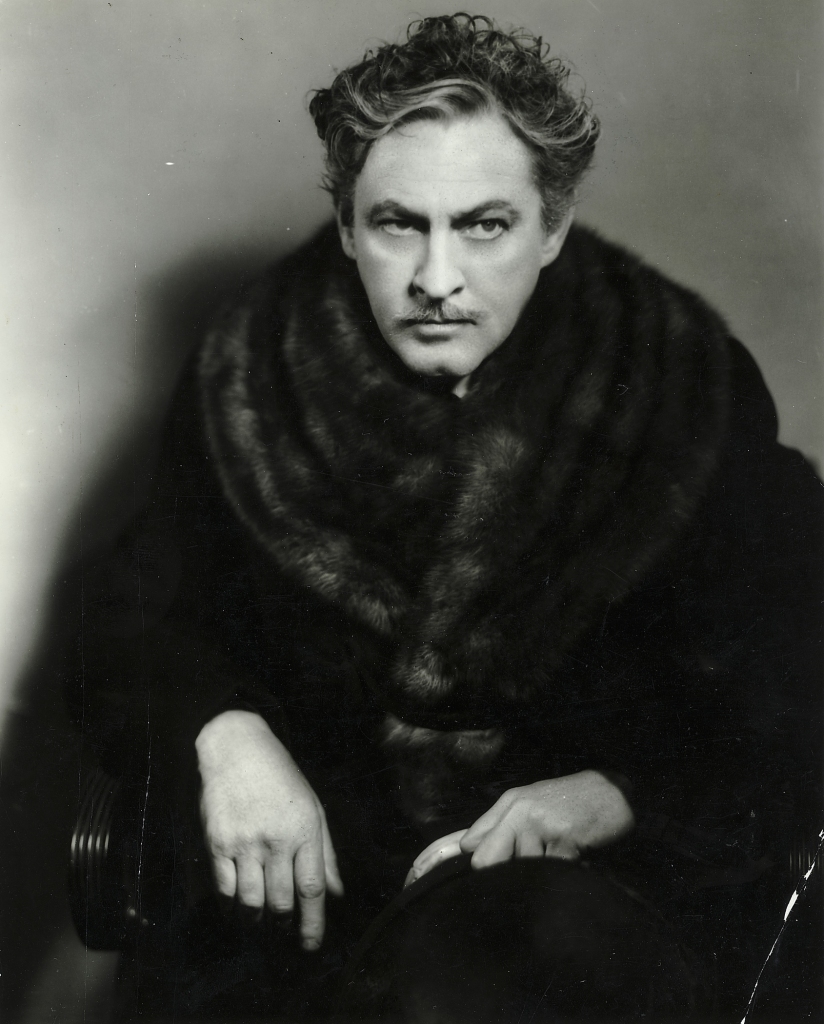
Diana’s mother already had two sons from her previous marriage and changed her name to Michael Strange. Just before Diana’s christening as Joan, her mother thought it sounded too much like John so came up with Diana.
John Barrymore said Diana would always be known as Treepeewee between father and daughter.

As for Michael Strange, during her first marriage, she always had a black and gold Rolls Royce at her beck and call. She attended parties for the Prince of Wales among others. During the outbreak of World War One, her hair was bobbed and she was smoking at a time when ladies didn’t. She was a suffragette and literary bohemian who wore trousers and sombreros.
Meanwhile, John came from several generations of family in the acting profession. But after the failure of his first marriage, he felt empty about his stage success… he had always wanted to be a painter.
So, John and Michael as she was known, married and threw china and other objects at each other during their evening arguments.

It was in 1925 when Strange said she was leaving him that John threatened to quit the stage for good. And he did, despite his magnificent Hamlet, and he would only appear in Hollywood films after that. He did appear again though in 1940, in a burlesque of himself while his daughter Diana starred in her first professional tour of Outward Bound right next door at a theatre in Chicago.

Diana knew early as a girl that she was not beautiful like her mother. It was something which would handicap a career which lacked true Barrymore talent as well. And she was told she would never see her father as he lived in “that monstrous factory” as her mother called Hollywood.
One of the first times Diana met her father was around the age of eight and he told her: “You know, you look like your aunt Ethel.” Something which is probably the truest summing up. Not a beauty but an actress with possibilities.
“You’re a lady and you’ll dress like a lady,” her mother would tell her off along with not allowing Diana to play with the neighbourhood kids as they were “common”.

As Diana grew up the guests in her mother’s New York house ranged from actor and director Charlie Chaplin (1889-1977 stroke in sleep) to playwright Noel Coward (1899-1973 heart failure). Having only met her father once, the ten-year-old Diana lied to her friends about how she had been to Hollywood, met movie stars and been at her father’s mansion and aboard his yacht.
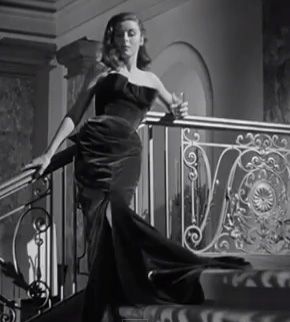
“Perhaps lied is not the word. I invented,” said Diana. Would this invention be at the core of Diana’s failure as an actress? There’s a character in the film The Bad and the Beautiful (1952) which is supposedly based on Diana played by Lana Turner. But by the end of that film and at the beginning of the end credits, it is the polar opposite character, the drunken slut Lila played by Elaine Stewart – half liar and half Diana – who gets the first credit as we see her as probably the true estimation of Diana’s reputation in Hollywood at the end. Lana’s character is something which might have been.
Anyway, a letter came inviting her to visit her father, his new wife actress Dolores Costello (1903-79 emphysema) and their infant children. When Diana’s mother said; “No”, Diana threatened suicide and headed for a seven-storey window. Her horrified mother grabbed her and put iron bars on the windows of her bedroom. Looking at the bars, Diana dreamed of running off to Hollywood to join her father.
Meeting her father for only the second time while she was at boarding school, he took the teenager to dinner and offered her liquor.

“It’s exactly like a milkshake. It’s a brandy alexander,” said her father. By the time dinner was over, she had consumed two.
The following night they went out again and her father drank until he passed out.
Back home with her mother, she borrowed and wore a red dress suitable for the fallen woman Sadie Thompson from the movie Rain (1932) and when she returned home it was to her mother’s outrage who said: “It’s that Barrymore streak in you… you’re only half a lady. Remember that!”
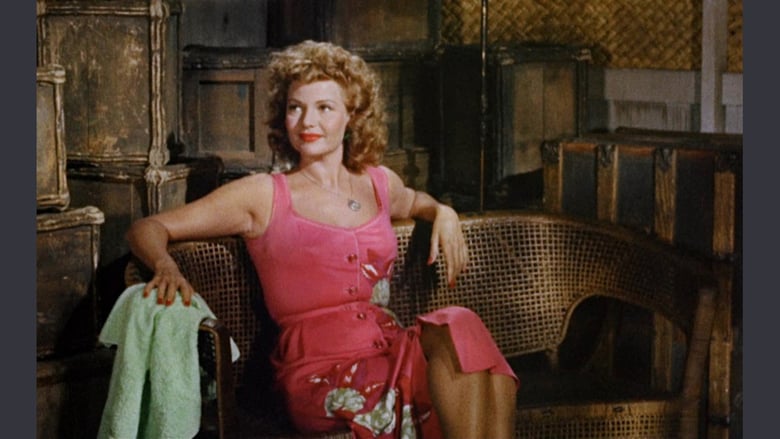
Her mother sent her to the American Academy of Dramatic Art when Diana showed an interest in acting. “I don’t want you to ever say I didn’t give you a chance,” she said.

It was there that Diana finally dropped her name of Diana Blythe and called herself Diana Barrymore. She said she got drunk for the first time in her life in 1937 while out on a picnic with a boyfriend during an idyllic summer in France. As they were riding bicycles home on the road, Diana swerved recklessly to see how close she would get to the cars, swearing back at the drivers who called out. She then hit the side of a car and sprained her ankle badly in the ensuing accident. It should have been a cautionary tale for Diana.
With World War II looming in Europe, she declined marriage and went back to the States to become “Personality debutante of the year.”

“I give you the most beautiful, the most talented, the most exciting debutante of 1938,” said the toastmaster at Diana’s coming out party. It was there that renowned socialite Mrs Cornelius Vanderbilt held Diana’s hand and said: “You look lovely, stay as you are, my dear.”
She continued in society with ‘nice’ boys who smooched and necked but were too sexually inexperienced to attempt seduction. Diana then met the ‘masculine’ Tony Duke and they fell in love. She thought him “divine”.
Unexpectedly, she got a letter from producer David O. Selznick (1902-65 heart attacks) inviting her to test for Scarlet O’Hara in Gone with the Wind (1939). She read lines with actor Richard Carlson (1912-77 cerebral haemorrhage) as Ashley Wilkes at the old Paramount studios at Astoria, Long Island at 8am on 29 November 1938. She knew after the test in the pit of her stomach that she wouldn’t get the part.
She was disappointed by her coming out party as her family, including her father and her two step-brothers were scattered across the globe. She said of it: “It’s all not right, somehow…”

Possibly losing her virginity to Tony Duke, she then met up with Errol Flynn (1909-59 heart attack), who admired her father’s genius. He was also one of his drinking buddies. They spent over a week together and while Diana said it was a brotherly relationship, it may have also been when Diana was first broken in sexually and introduced to alcohol formally due to the reputation of Flynn with the booze and younger girls. Diana said he told her she was pretty and she should wear more make-up.
After one big night she was told she had drunk too much. “You were loud and raucous at the bar. Everyone was staring at you.” She was warned by this friend that her father’s hard drinking may be inherited and it may cause her to eventually lose her looks. But just as she was warned, she was too young to understand.
The weeks partying with Flynn ended and when she reached home Tony Duke dumped Diana, engaging another girl. Perhaps she did lose her virginity to Flynn after all.
Diana continued to pursue acting by doing summer stock on stage for ten dollars a week. She then got a part in Outward Bound, her first Equity contract and $150 a week. She had learned a valuable lesson from a producer when she turned up without studying the script and was told she was not the only actress under consideration. Diana obviously didn’t start out professionally but she applied herself and the play opened in Philadelphia – “the birthplace of the Barrymores”.

Despite a sweaty dress and runny mascara from nerves, one critic wrote she “was carrying on in the Barrymore tradition, with genuine acting ability”. Those within the theatre like William Brady (1863-1950) said: “I think one day you’ll be a star”. While Florence Reed (1883-1967) said: “The rest is up to you”. It is probably ironic that the part she played was probably one of the suicide characters in Outward Bound which it set in limbo aboard an ocean liner where the dead are judged before they go onto the afterlife.
Diana fell in love with the applause and actor Bramwell Fletcher (1904-88) who appeared in the film Svengali (1931) with her father and who was seventeen years her senior.

It was a tempestuous relationship, much like her parents, and when the pair did a play together, they would argue on stage. Already Diana’s professionalism, if she had any, was flagging.
“Diana! It’s disgraceful. You should be spanked,” said regal actress Ann Andrews (1890-1986) about Diana’s behaviour.

Then Diana got a part which would open on Broadway entitled Romantic Mr Dickens. When her mother, who also dabbled on the stage as well as writing, heard Diana’s flat voice she was horrified. This flatness would return toward the end of her life when she was interviewed in the mid to late-1950s by Mike Wallace on camera…

Her mother and actor Robert Keith (1898-1966) coached her and when she walked on stage and spoke her first line, applause rang out in a deafening ovation. Her mother wept after the performance while the reviews the next morning were positive… it closed after six days.
Producer Walter Wanger (1894-1968 heart attack) was in the audience at one of her next plays and soon Diana left for Hollywood.
Before leaving New York, Diana admits in her book that she had a fling with a dark eyed actor which was pure animal lust. As she left the bedroom after that encounter, she told herself: “I’m living. This is life!”

Her father met her at the train station in Los Angeles.
“Not since Garbo, have I seen so many photographers,” he said.
Her first film was Eagle Squadron (1942) with John Loder (1898-1988), Jon Hall (1915-1979 gunshot to the head) and Robert Stack (1919-2003 heart failure). Any confidence in her appearance was shattered upon turning up at the make-up department at the start of production when they told her that her teeth had to be capped, her forehead was too low and her chin was too heavy… she didn’t have The Great Profile which her father was famous for.

Producer Wanger joked with cameraman Stanley Cortez (1908-97 heart attack): “I didn’t buy a pretty face. I bought an actress. I know she’s not pretty.”
Diana had to get used to the Hollywood way of doing things which meant a lot of waiting around between takes and the fact that there was no audience. At first, she described the camera as a monster but director Arthur Lubin (1898-1995) told her it was a friend that could take a shot over and over again unlike the stage.

Eagle Squadron took thirteen weeks to film and only former stage actor Loder knew what Diana was going through, but he saw as time passed she gained confidence.
She went to her first Hollywood party in her honour where she suggested her father come but Diana was told he wasn’t welcome because of his drunken embarrassing behaviour.

It was there that she came across a drunken famous actress in the powder room who claimed her life had been ruined by an unrequited love for Clark Gable (1901-60 heart attack).
“Sweetie, don’t let Hollywood kill you as it’s killed me,” she sobbed.

After the party, a randy and red-faced producer took her home, forced himself into her apartment, knocked her down and tried to strip her. #MeToo anyone? Diana resisted and he left. Anyway, Diana preferred the younger and good-looking type although she was still about to be proposed to by the older Bramwell Fletcher.
Anyway, such was her introduction to Hollywood, where men had cigars and brandy and talked business while the women bitched. There was no conversation of the type enjoyed in high society.

As for the times she went out with her ailing father, who was in the last stages of his alcoholism: “He wasn’t witty, he wasn’t entertaining. He was shocking” as he insulted party guests like a mischievous little boy.
Suddenly sober one evening in the car on the way home, he told Diana that he hoped the producers wouldn’t pick up her option: “Go back to New York… You can’t keep your sense of perspective out here.”
She continued to see him at his Tower Road house and for a time moved in with him as they acted together in Romeo and Juliet for radio. This was followed with the pair appearing with her uncle Lionel Barrymore (1878-1954 heart attack) in his wheelchair as Caesar in Julius Caesar also on radio.

According to Diana, she moved out of her father’s home when one night he was in bed and insisted she phone a call girl for him. She moved into her own mansion with a staff of four, two dogs and a Packard. It was the former home of Basil Rathbone (1892-1967 heart attack) and his wife Ouida (1886-1974 after fall) who had hosted many a party there. It was the beginning of Diana’s lavish spending and living well beyond her means.

Bramwell moved in to save on the rent and she threw a party there with Eagle Squadron friends that she had made… also there was Van Heflin (1908-71 heart attack in his pool). He told her that if she married Bramwell her career would end and to marry him as he could introduce her to important people like Joe Pasternak (1901-91 complications of Parkinson’s disease). Pasternak was the former business partner of Henry Koster (1905-88 liver cancer) who helped make singer Deanna Durbin (1921-2013) a star and had recently discovered Abbott and Costello. He had a film about to be produced at Universal entitled Between Us Girls with a role which top actresses like Ginger Rogers (1911-95 natural causes), Katherine Hepburn (1907-2003 cardiac arrest) and Durbin apparently coveted.
It was a plum role and a showcase for any good actress with six distinct roles for the lead, including Queen Victoria in her 80s, a girl of twelve, Sadie Thompson and Joan of Arc!
Anyway, that night, Diana went to the beach with Heflin where I guess a sexual deal was struck, something which ended in a scene between Diana and Bramwell once he dropped her off. A columnist wrote the next day about the Heflin ‘affair’: “Diana Barrymore, everyone will tell you, is a good kid, but she is just another Barrymore – who continues to confuse Hollywood”. Heflin would marry within weeks.
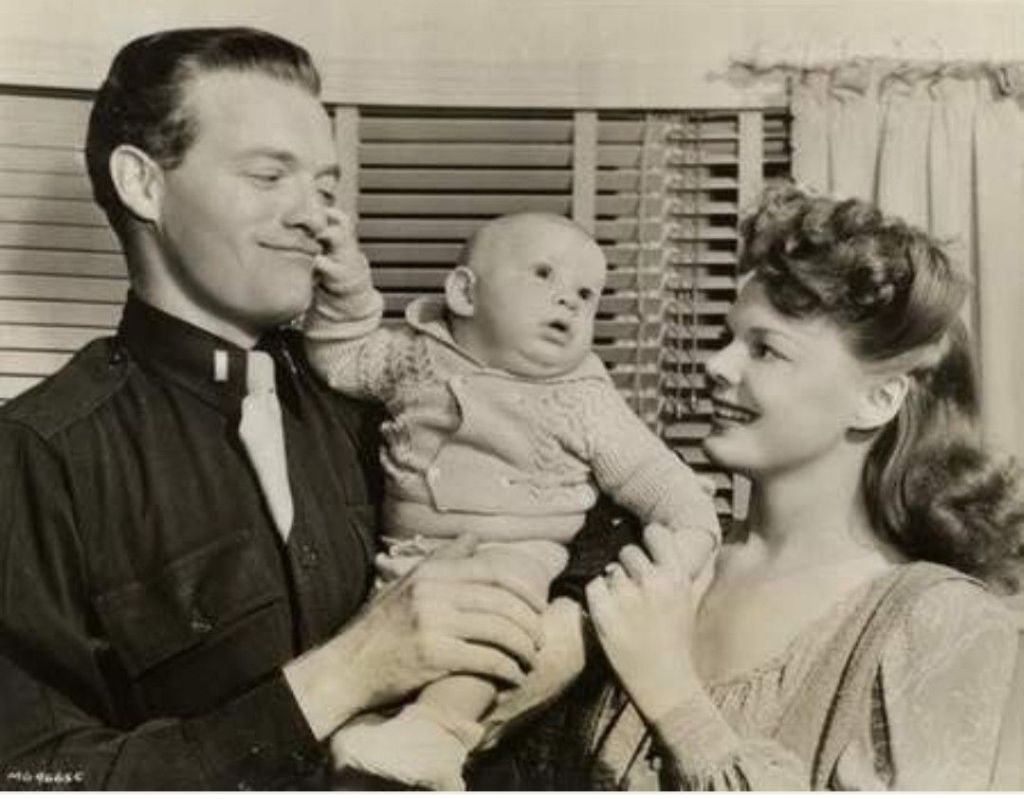
There was a renewed Hollywood media build-up of Diana as… “dark-eyed storm cloud” to “witty, ultra-sophisticated” to her having “a heart-shaped face… nose of a duchess… quick and sharp”. Diana knew she couldn’t live up to the hype.
At Alfred Hitchcock’s (1899-1980 kidney failure) home for a party one evening, she drank martinis to bring out her so called rapier wit but instead insulted the host much like her father.

“Get this drunken woman out of here,” said Hitchcock.
She wrote a letter of apology which was never answered.
The tryst with Heflin had worked and Koster loved the screen tests of Diana and gave her a raise to $1500 a week. With production of Between Us Girls underway and Diana in the lead role, Deanna Durbin turned up to see who this girl Diana was on set. A nervous Diana asked her to leave as she couldn’t concentrate and word got out that Durbin had been ordered off the set.

In true Hollywood style The Hollywood Reporter wrote: “Diana Barrymore’s high-minded manner is making her no friends.”
Between Us Girls (1942) would be the film which would make or break Diana. But as filming got well under way, while Diana was at a preview of Eagle Squadron at the Pantages, she received word that her father John Barrymore died after a battle with pneumonia. Her uncle Lionel had been with him during the last moments but by the time Diana got there, both were gone. Lionel, who she hardly knew, brushed her off after the funeral. Aunt Ethel Barrymore (1879-1959 heart disease) wasn’t there and hardly knew Diana was alive.

To further complicate matters during the production of the film Diana married Bramwell Fletcher against the wishes of the studio. Things were starting to fall apart.
In her ‘tell all’ book, Diana skips much of the production of Between Us Girls as Diana’s already slightly tainted reputation would ruin the film’s reputation and chances at the box office.
Between Us Girls was originally called Boy Meets Baby because of its plot which sees the daughter of an older woman play a 12-year-old so her mother’s prospective husband will think her mother is younger.

Deanna Durbin probably didn’t take the role because it was too demanding and didn’t have many songs. The end product has no singing at all. A Durbin product probably wouldn’t have been as good. With Robert Cummings (1910-1990 pneumonia) already cast and on a career high with the success of The Devil and Miss Jones (1941), he would soon have further success with Hitchcock’s Saboteur (1942). He had already been fostered by Koster and Pasternak, who used him in Three Smart Girls Grow Up (1939) and a couple of other Durbin movies. Universal studios had been saved by Durbin and Abbott and Costello, who had stolen the film One Night at the Tropics (1940) from Cummings.
The making of Between Us Girls and its release paled against Cummings’s Hitchcock movie and King’s Row (1942) which made him one of the most sought-after actors in Hollywood at the outbreak of World War II. When Diana was cast, the title was changed to Love and Kisses, Caroline. Kay Francis (1905-68 breast cancer) and John Boles (1895-1969) were cast in the senior leads as Diana’s mother and boyfriend.
Koster said of Diana: “She was a hard person to cope with. She meant well, but I think she had some of the mental difficulties her father had. She was always busy with other things when we wanted to shoot her scenes.”
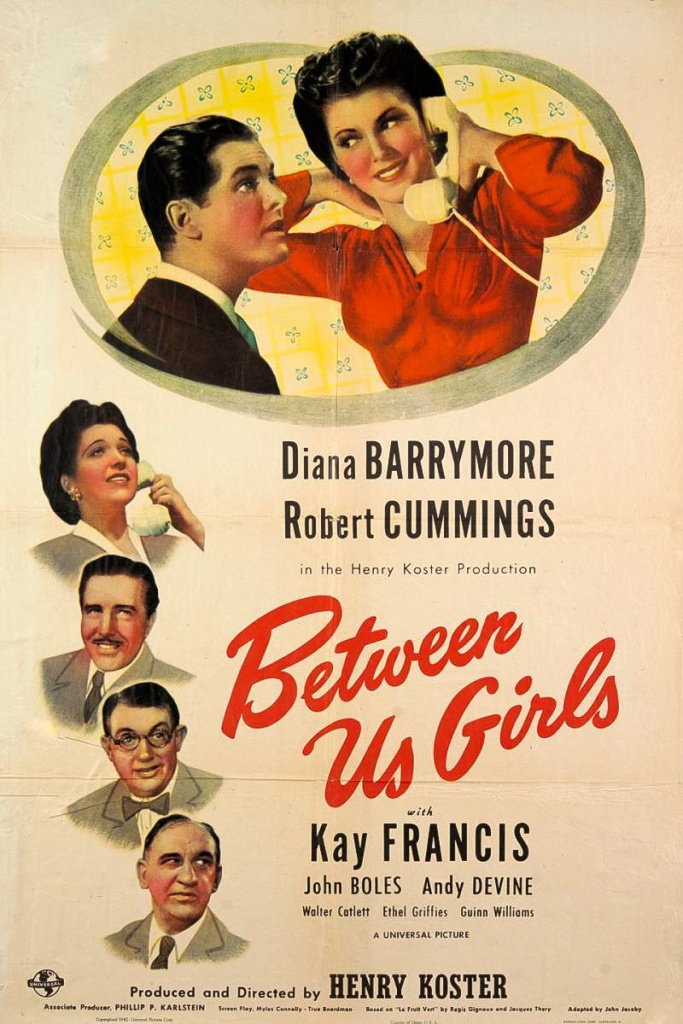
More telling was Arthur Lubin, who had directed the previous Eagle Squadron, when he said: “She went on the make for every man on the set. She was very oversexed that girl… couldn’t get enough.”
Thus, she was absent without leave during the filming of Between Us Girls when she had one of the best dressing rooms on the Universal lot for a tryst or three.
Diana’s grandfather had died in an insane asylum many years earlier, something which had haunted her father.

Koster, in hindsight, didn’t think the material was there in the script for Between Us Girls. It was filmed between April and July 1942. Her father had passed away in late May. Koster also thought that Diana didn’t have “any of the Barrymore talent but had the Madame Sans-Gere attitude on the set and in her private life.” In other words, this translates to “madame without embarrassment” as Diana always spoke her mind and would often offend people with her plain speaking and bad behaviour. Anyway, there was little of the lady she had been brought up to be. She may have been disturbed by her father’s death plus an insecurity about her looks and talent for “the greatest part for a girl in 20 years”.
Koster, furthermore, described Diana’s lack of talent and way of talking as “the poor man’s Tallulah Bankhead”.
Gossip columnist Hedda Hopper visits the set and ruins Diana in PART TWO

No comments:
Post a Comment